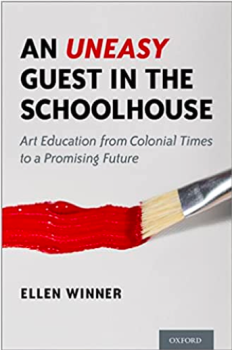
An Uneasy Guest in the Schoolhouse: Art Education from Colonial Times to a Promising Future
PUBLISHED:AUTHORS: Ellen Winner
Resource Summary
An Uneasy Guest recounts how art education has been conceptualized, justified, and taught in the United States in the face of the persistent marginalization of the arts in the American education system. The teaching of art has often been justified in terms of some non-art outcome. In the 19th century children dutifully copied, line by line, pictures given to them by their teachers; this training was meant to develop drawing skills for industry. In the first part of the 20th century, with the rise of John Dewey-inspired progressive classrooms, children were encouraged to express themselves freely; now the goal was to nurture the artist in the child and to promote emotional well-being. Later, with the accountability movement in education, art education was justified in terms of its putative ability to raise standardized test scores. Since the 19th century, there have been recurrent pendulum swings between progressive and traditional approaches to art education in the United States, documented in this book along with vivid comparisons to the traditional approach the author observed in China (much like the American 19th century approach) and the progressive approach the author observed in preschools in Northern Italy. In the face of this uncertain past, 21st century art education has exploded with a wealth of new ideas aligned with -- but going far beyond -- the progressivism of the early 20th century. Art educators on the vanguard today base their teaching on the practices of contemporary artists, where art is idea-driven, investigative, personally meaningful, interdisciplinary, and socially conscious. This book documents what art education in America used to be, and portrays how it can become a strong and central presence in the schools of tomorrow.

-
-
-
-
-
-
Support PZ's Reach